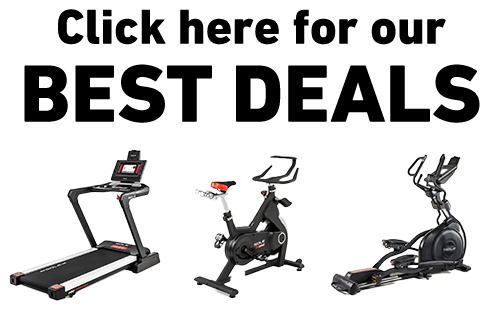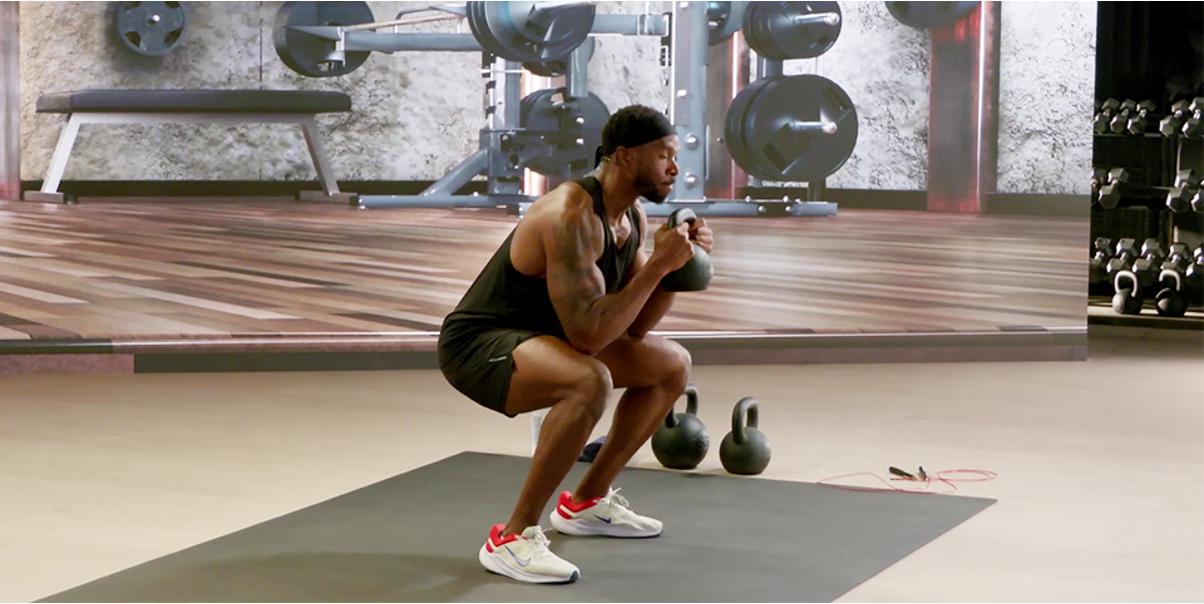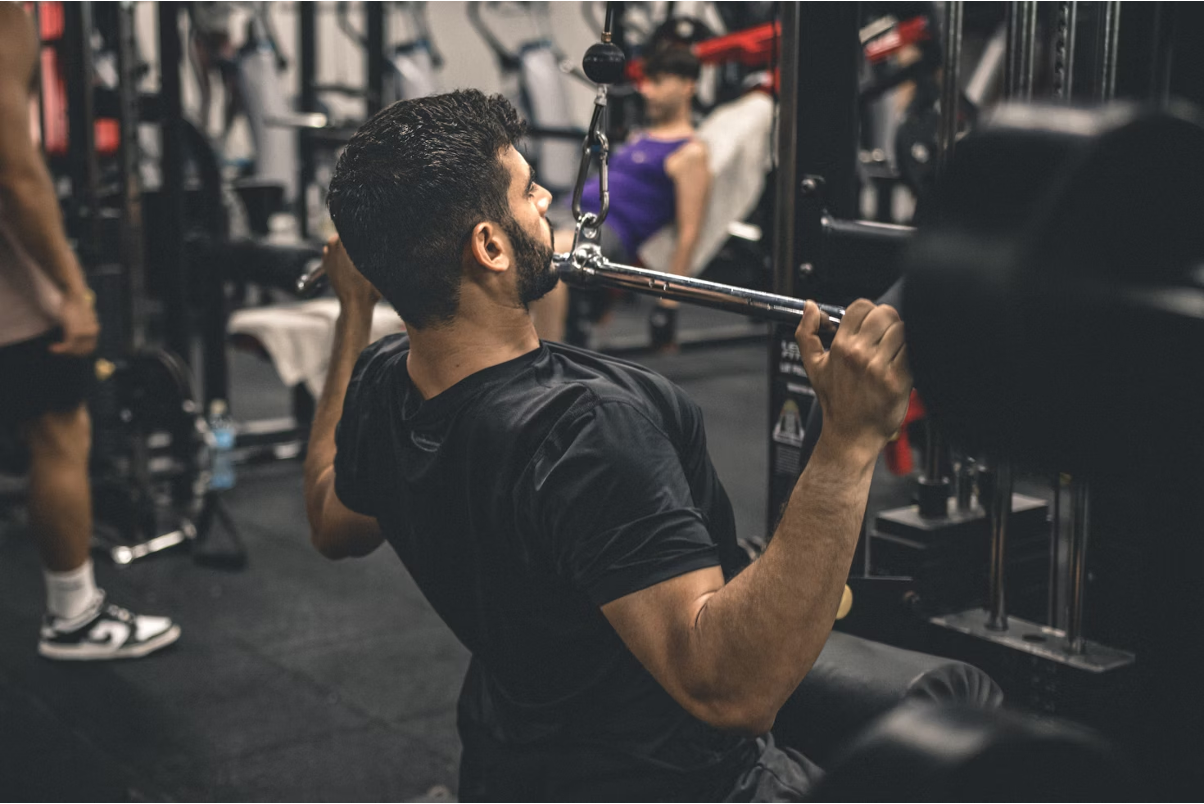Key Takeaways
- Kettlebell squats give you better core engagement and functional movement patterns, while barbell squats let you lift heavier weights for maximum strength.
- The front-loaded weight of kettlebell squats hits your stabilizer muscles harder than barbell squats.
- Barbell squats let you load way more weight, which is perfect for building serious lower body mass and strength.
- Kettlebell squats work great for home workouts or when you don't have much equipment.
- SOLE Olympic barbells provide the unlimited loading potential for building maximum leg strength, while the adjustable dumbbells offer front-loaded goblet squat variations with precise progression.
The Great Squat Debate: Which Tool Builds Better Legs?
When building powerful legs, few exercises match what squats can do for you. But should you grab a kettlebell or load up a barbell? The fitness world loves to argue about this, but the truth is that each tool brings something different to the table.
Both kettlebell and barbell squats will make you stronger, but they work through completely different mechanics. Maybe you want to pack on muscle mass, or perhaps you're after that functional fitness that helps in real life. Either way, you need to understand what makes each tool special before picking your weapon of choice.
|
At SOLE, we're proud to offer top-quality exercise equipment designed for home and gym use. Our machines are built to meet the highest standards of durability and performance, making them ideal for fitness enthusiasts at any level. SOLE Products
|
Muscle Engagement Battle: What Each Squat Actually Works
While both squat types hammer your lower body, they create different muscle activation patterns that can really impact your results. (Image courtesy of Men’s Health)
Primary Muscles in Kettlebell Squats
Kettlebell squats, especially goblet squats, blast your quads harder because of that upright torso position. The weight in front shifts emphasis to the front of your thighs, making them killer for developing that teardrop muscle above your knee (the VMO) that makes your legs look good and keeps your knees healthy.
Your side glutes (gluteus medius and minimus) get way more work during kettlebell squats compared to barbell versions. These often-ignored hip muscles are crucial for hip stability and proper movement. They have to work harder because of the rotational forces from the kettlebell's offset load.
Barbell Squat Muscle Patterns
Barbell back squats are the king for posterior chain development, like your glutes, hamstrings, and lower back muscles. The weight on your upper back lets you hinge more at the hips, which creates a bigger stretch and stronger contraction in these powerhouse muscles. This is why barbell squats are the go-to for building that booty.
Your quads still get plenty of work during barbell squats, especially when you're driving up out of the bottom. But the work gets spread more evenly across all four quad muscles. The rectus femoris (that center quad muscle) often works harder because of the increased hip bend.
Barbell front squats split the difference between back squats and kettlebell squats. They hit your quads harder than back squats but don't demand quite as much core work as kettlebell variations. This makes them a great middle ground when you want benefits from both worlds.
Core Engagement
Kettlebell squats absolutely destroy your abs and obliques. Your entire midsection has to work like crazy to keep you from folding forward or twisting under that challenging leverage. Some research shows kettlebell squats work your core almost as much as dedicated ab exercises.
Barbell squats target the deeper core muscles, the ones you can't see but that keep your spine safe. These stabilizers work mainly to protect your spine under heavy loads. While they won't give you visible abs like kettlebell work might, they're crucial for spine health and real strength.
Stabilizer Muscle Differences
The offset kettlebell load fires up upper body stabilizers that barbell squats miss. Your rotator cuff, serratus anterior, and lats all have to work to keep the weight in position. This makes kettlebell squats surprisingly good for building upper body stability and better posture.
Barbell squats hammer your upper back muscles to keep the bar in place. Your lower traps and rhomboids work constantly during back squats to create that shelf for the bar. This hidden benefit of barbell squatting helps fix that forward shoulder posture so many people have from desk work.
7 Kettlebell Squat Benefits You Can't Ignore
1. Enhanced Mobility and Flexibility
Kettlebell squats naturally help you squat deeper because the weight acts as a counterbalance. This extra range of motion gives your hip flexors, inner thighs, and ankles a better stretch than most barbell squats.
Regular kettlebell squatting can fix common mobility issues that hold people back. (Image courtesy of BODi)
The goblet position specifically encourages your hips to open up properly, which helps activate your glutes and keeps your knees tracking correctly. This corrective effect makes kettlebell squats perfect for fixing problems like knees caving in or not being able to hit depth.
2. Functional Strength That Transfers to Life
The strength you build from kettlebell squats directly helps with real-world activities. Think about it, when do you ever have a perfectly balanced load on your back in daily life? Kettlebell training prepares you for carrying groceries, picking up kids, or moving furniture.
3. Core Activation That Actually Shows
Your abs work harder during kettlebell squats than almost any other leg exercise. The front-loaded position forces constant core engagement that builds both strength and definition. Many people report better ab development from kettlebell training than from endless crunches.
4. Better Balance and Body Awareness
The unstable nature of kettlebell loading improves your proprioception, which is basically your body's awareness of where it is in space. This enhanced coordination carries over to sports, other exercises, and reduces your risk of falls or injuries in daily life.
5. Exercise Variety Without Extra Equipment
One kettlebell gives you access to goblet squats, rack squats, overhead squats, and various single-leg variations. This variety keeps training interesting and challenges your muscles from different angles without needing a gym full of equipment.
6. Lower Back Safety
The upright position and front loading of kettlebell squats put less stress on your lower back compared to heavy barbell back squats. This makes them ideal for people with previous back issues or those who want to train hard while minimizing injury risk.
7. Perfect for Home Workouts
Kettlebells take up minimal space and don't require a rack or spotter. You can get an incredible leg workout in your living room, so they’re perfect for busy schedules or when you can't make it to the gym.
5 Barbell Squat Advantages for Serious Strength
Barbell squats have dominated strength training for good reason: they deliver results that are hard to match with any other tool. (Image courtesy of Men’s Health)
1. Unlimited Loading Potential
The biggest advantage of barbell squats is simple: you can load them heavy. While kettlebells max out around 48 kg for most people, barbells let you progressively add weight. This continuous progression is key for long-term strength development.
2. Maximum Lower Body Strength
Nothing builds raw leg strength like heavy barbell squats. The ability to load hundreds of pounds creates adaptations in your muscles and nervous system that lighter implements can't match. If your goal is to be as strong as possible, barbell squats are non-negotiable.
3. Precise Loading Control
With barbell squats, you can add as little as 2.5 pounds at a time. This precise progression lets you follow structured programs and ensures continuous progress. Kettlebells often jump 4–8 kg between sizes, which can make progression frustrating.
4. Superior Mass Building
For pure hypertrophy (muscle growth), barbell squats reign supreme. The combination of heavy loading and high volume possible with barbells creates the perfect storm for building thick, powerful legs. Bodybuilders have relied on barbell squats for decades for good reason.
5. Sport-Specific Training
If you compete in powerlifting, Olympic lifting, or most strength sports, you need to squat with a barbell. The specific adaptations and techniques required for competition can only be developed through consistent barbell training.
Which Squat Variation Matches Your Goals?
Choosing between kettlebell and barbell squats comes down to matching the tool to your specific goals.
Best Choice for Strength Athletes
For powerlifters, Olympic lifters, and strength competitors, barbell squats are mandatory. The progressive loading and mechanical specificity of barbell work directly improves competition performance. You can't prepare for a powerlifting meet with kettlebells alone.
Barbell squats also create better transfer to other big lifts like deadlifts and cleans. The adaptations from heavy barbell work improve your overall force production in ways that benefit your entire training program.
For these athletes, kettlebell squats work best as accessory movements to fix weak points, improve mobility, or provide active recovery between heavy sessions. They complement barbells but can't replace it for serious strength athletes.
Ideal Option for Functional Fitness
CrossFit athletes, military personnel, and people who need real-world strength usually benefit more from kettlebell squats. The offset loading creates better carryover to activities like carrying uneven loads, moving in multiple directions, and generating power from awkward positions.
The front-loaded position of kettlebell squats transfers directly to movements like cleaning objects, catching things, or lifting stuff to shoulder height. This positional strength often matters more in unpredictable situations than pure barbell strength.
Better Pick for Beginners
New lifters almost always do better starting with kettlebell squats. The learning curve is gentler, and the front-loaded position naturally teaches good squat mechanics. Most people can learn a solid goblet squat in one session, while barbell squats might take weeks to feel right.
The limited loading of kettlebells actually helps beginners by preventing them from going too heavy too soon. This built-in safety feature reduces injury risk while movement patterns are still developing. Once someone masters bodyweight and kettlebell squats, transitioning to a barbell becomes much easier.
Smart Selection for Home Gyms
If you train at home or travel frequently, kettlebells make way more sense. A single kettlebell provides endless workout options, while a barbell setup requires significant space, money, and often safety equipment like a rack. The versatility and portability of kettlebells make them perfect for minimalist training setups.
Build Powerful Legs with SOLE's Versatile Squat Equipment
No matter if you're team kettlebell or team barbell, SOLE has the equipment to maximize your squat training.
The SW111 Olympic Barbell delivers everything you need for serious barbell squats. It's 194,000 PSI tensile strength handles heavy loads without bending, while the specialized knurling keeps the bar secure on your back during those heavy sets. This commercial-grade barbell lets you progressively overload just like the article recommends for building maximum strength.
While SOLE doesn't carry kettlebells, the SW180 Adjustable Dumbbells offer a brilliant alternative for goblet-style squats. Hold one dumbbell vertically at your chest and you get that same front-loaded position that makes kettlebell goblet squats so effective.
With weights from 5–80 pounds, you can start light to perfect form, then progressively increase; something that's actually easier than with fixed-weight kettlebells that jump 8–16 pounds between sizes.
Add the SW116 Weight Bench for box squats when you need to work on depth or reduce knee stress. The SOLE Equipment Mat protects your floors during heavy barbell squats and provides a stable, non-slip surface for all your lower body training.
The SOLE+ App brings guided squat workouts that show proper form for both barbell and dumbbell variations.
Ready to build legs that turn heads? Check out the SOLE equipment collection today!
Frequently Asked Questions (FAQs)
Can kettlebell squats replace barbell squats entirely?
For general fitness goals, yes. Kettlebell squats can give you strong legs, better movement, and a great physique without ever touching a barbell. Many people train exclusively with kettlebells and get fantastic results. They often report less joint pain and more consistent training compared to heavy barbell work.
How much weight should I use when switching from barbell to kettlebell squats?
Start way lighter than you think, seriously. Most people should begin with about 25–35% of their barbell back squat weight for kettlebell work. If you back squat 200 pounds, try a 16–24 kg kettlebell for goblet squats first. The different mechanics and stability demands make kettlebells feel much harder than the weight suggests.
Are kettlebell squats safer for people with back issues?
Many people with back problems find kettlebell squats more comfortable than barbell versions. The upright torso position and front loading reduce stress on the lower back significantly. The counterbalance effect also helps maintain better spinal alignment throughout the movement.
That said, "back issues" covers a huge range of problems. Some conditions respond better to the distributed load of a barbell, while others prefer the kettlebell position. Always consult with a physical therapist or doctor who understands strength training before making this decision.
Which squat burns more calories?
At the same relative intensity, kettlebell squats usually burn more calories because of the extra stability work required. Your whole body has to work harder to control the weight, which increases energy expenditure compared to the more stable barbell position.
However, barbell squats let you move much heavier weights, which increases total work performed. For pure calorie burning, the total volume matters more than the implement. A tough workout with either tool will torch calories effectively.
Can I get the benefits of kettlebell squats using SOLE's adjustable dumbbells instead?
Absolutely! When you hold a SW180 or SW155 dumbbell vertically at your chest (goblet position), you get that same front-loaded squat pattern that makes kettlebell goblet squats so effective. Your core fires up, you stay more upright, and you get that counterbalance effect that helps with depth.
The big advantage with adjustable dumbbells? Precise progression. Kettlebells typically jump 8–16 pounds between sizes, which can be frustrating when you're ready for more weight but the next bell up is too heavy. With SOLE's dumbbells, you can increase by just 2.5 or 5 pounds at a time, perfect for steady progress without form breakdown. Combined with the SW111 Olympic Barbell for your heavy work, you've got the best of both worlds: front-loaded squats for mobility and core work, plus barbell squats for maximum strength.




Leave a comment
This site is protected by hCaptcha and the hCaptcha Privacy Policy and Terms of Service apply.